Dunjie Zhang
TEGDetector: A Phishing Detector that Knows Evolving Transaction Behaviors
Nov 26, 2021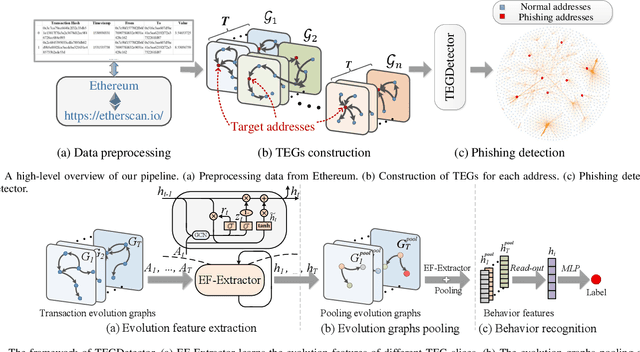
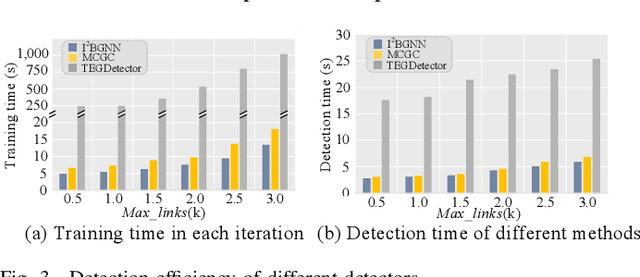
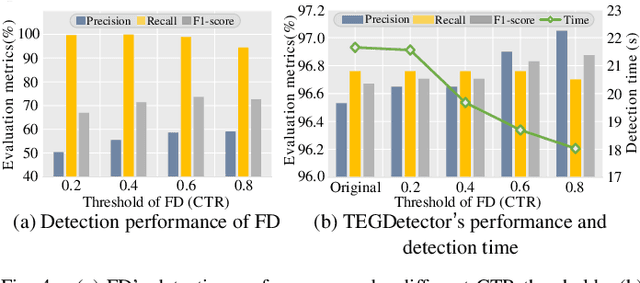

Abstract:Recently, phishing scams have posed a significant threat to blockchains. Phishing detectors direct their efforts in hunting phishing addresses. Most of the detectors extract target addresses' transaction behavior features by random walking or constructing static subgraphs. The random walking methods,unfortunately, usually miss structural information due to limited sampling sequence length, while the static subgraph methods tend to ignore temporal features lying in the evolving transaction behaviors. More importantly, their performance undergoes severe degradation when the malicious users intentionally hide phishing behaviors. To address these challenges, we propose TEGDetector, a dynamic graph classifier that learns the evolving behavior features from transaction evolution graphs (TEGs). First, we cast the transaction series into multiple time slices, capturing the target address's transaction behaviors in different periods. Then, we provide a fast non-parametric phishing detector to narrow down the search space of suspicious addresses. Finally, TEGDetector considers both the spatial and temporal evolutions towards a complete characterization of the evolving transaction behaviors. Moreover, TEGDetector utilizes adaptively learnt time coefficient to pay distinct attention to different periods, which provides several novel insights. Extensive experiments on the large-scale Ethereum transaction dataset demonstrate that the proposed method achieves state-of-the-art detection performance.
Blockchain Phishing Scam Detection via Multi-channel Graph Classification
Aug 19, 2021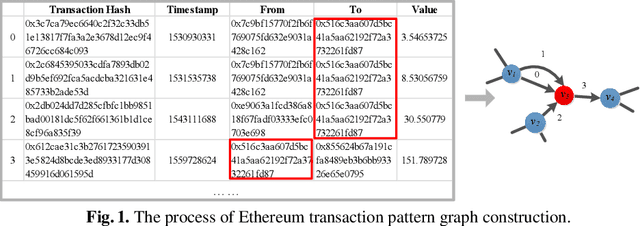
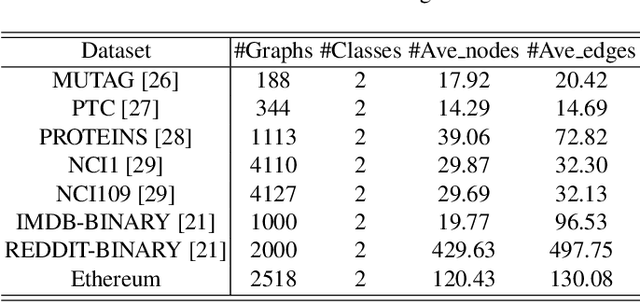
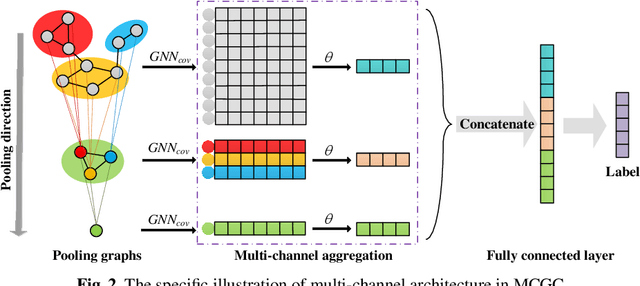

Abstract:With the popularity of blockchain technology, the financial security issues of blockchain transaction networks have become increasingly serious. Phishing scam detection methods will protect possible victims and build a healthier blockchain ecosystem. Usually, the existing works define phishing scam detection as a node classification task by learning the potential features of users through graph embedding methods such as random walk or graph neural network (GNN). However, these detection methods are suffered from high complexity due to the large scale of the blockchain transaction network, ignoring temporal information of the transaction. Addressing this problem, we defined the transaction pattern graphs for users and transformed the phishing scam detection into a graph classification task. To extract richer information from the input graph, we proposed a multi-channel graph classification model (MCGC) with multiple feature extraction channels for GNN. The transaction pattern graphs and MCGC are more able to detect potential phishing scammers by extracting the transaction pattern features of the target users. Extensive experiments on seven benchmark and Ethereum datasets demonstrate that the proposed MCGC can not only achieve state-of-the-art performance in the graph classification task but also achieve effective phishing scam detection based on the target users' transaction pattern graphs.
EGC2: Enhanced Graph Classification with Easy Graph Compression
Jul 16, 2021

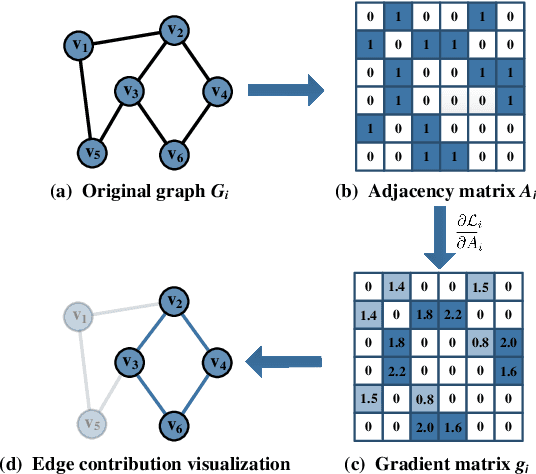

Abstract:Graph classification plays a significant role in network analysis. It also faces potential security threat like adversarial attacks. Some defense methods may sacrifice algorithm complexity for robustness like adversarial training, while others may sacrifice the clean example performance such as smoothing-based defense. Most of them are suffered from high-complexity or less transferability. To address this problem, we proposed EGC$^2$, an enhanced graph classification model with easy graph compression. EGC$^2$ captures the relationship between features of different nodes by constructing feature graphs and improving aggregate node-level representation. To achieve lower complexity defense applied to various graph classification models, EGC$^2$ utilizes a centrality-based edge importance index to compress graphs, filtering out trivial structures and even adversarial perturbations of the input graphs, thus improves its robustness. Experiments on seven benchmark datasets demonstrate that the proposed feature read-out and graph compression mechanisms enhance the robustness of various basic models, thus achieving the state-of-the-art performance of accuracy and robustness in the threat of different adversarial attacks.
Graphfool: Targeted Label Adversarial Attack on Graph Embedding
Feb 24, 2021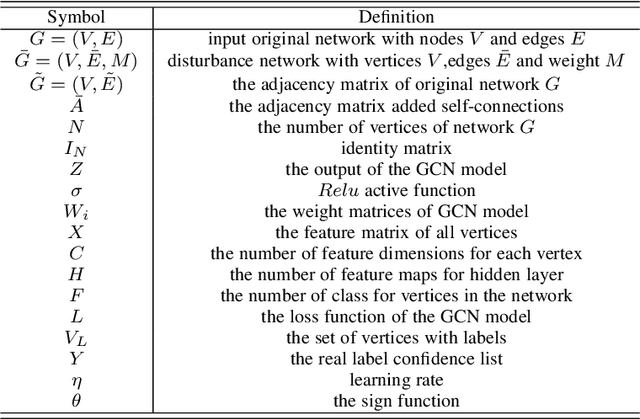
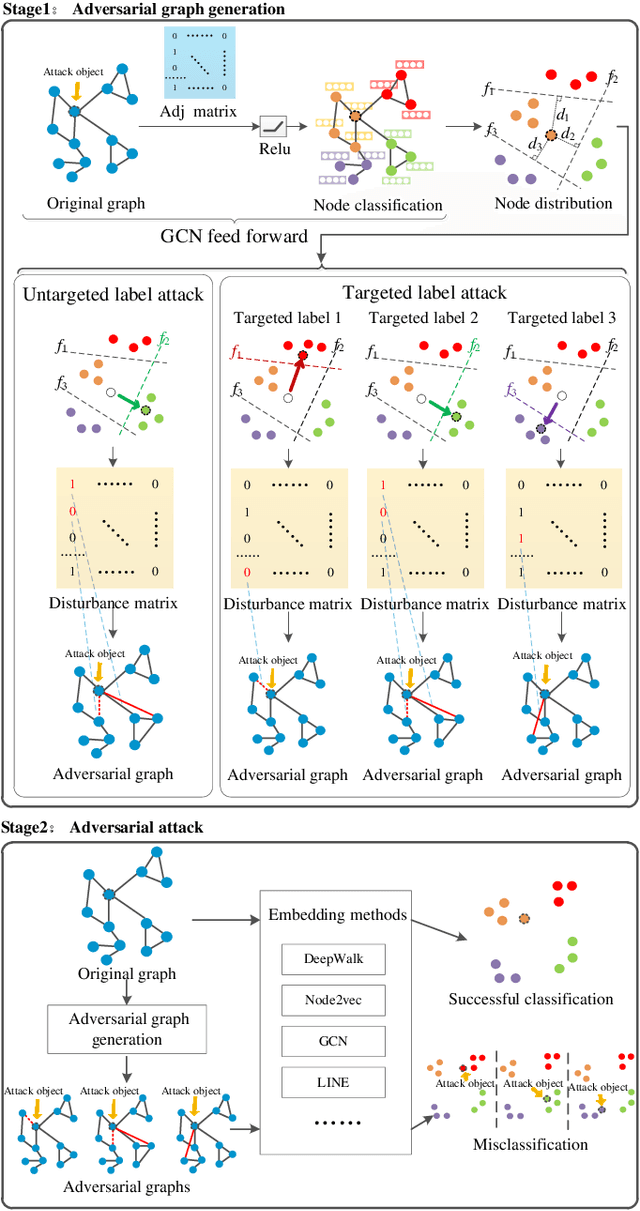
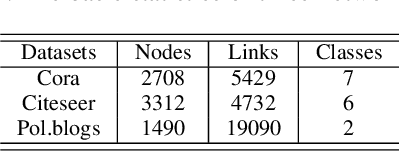

Abstract:Deep learning is effective in graph analysis. It is widely applied in many related areas, such as link prediction, node classification, community detection, and graph classification etc. Graph embedding, which learns low-dimensional representations for vertices or edges in the graph, usually employs deep models to derive the embedding vector. However, these models are vulnerable. We envision that graph embedding methods based on deep models can be easily attacked using adversarial examples. Thus, in this paper, we propose Graphfool, a novel targeted label adversarial attack on graph embedding. It can generate adversarial graph to attack graph embedding methods via classifying boundary and gradient information in graph convolutional network (GCN). Specifically, we perform the following steps: 1),We first estimate the classification boundaries of different classes. 2), We calculate the minimal perturbation matrix to misclassify the attacked vertex according to the target classification boundary. 3), We modify the adjacency matrix according to the maximal absolute value of the disturbance matrix. This process is implemented iteratively. To the best of our knowledge, this is the first targeted label attack technique. The experiments on real-world graph networks demonstrate that Graphfool can derive better performance than state-of-art techniques. Compared with the second best algorithm, Graphfool can achieve an average improvement of 11.44% in attack success rate.
GraphAttacker: A General Multi-Task GraphAttack Framework
Jan 18, 2021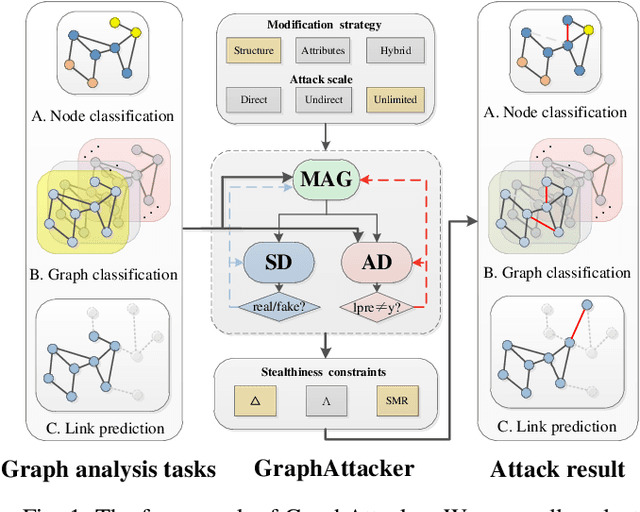
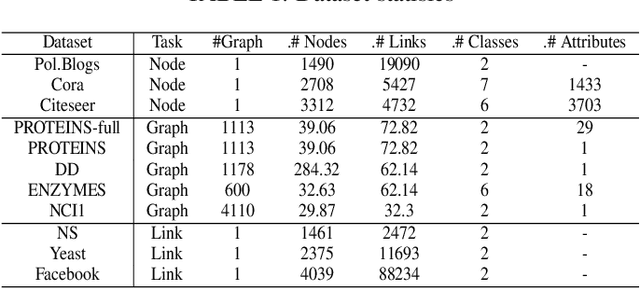


Abstract:Graph Neural Networks (GNNs) have been successfully exploited in graph analysis tasks in many real-world applications. However, GNNs have been shown to have potential security issues imposed by adversarial samples generated by attackers, which achieved great attack performance with almost imperceptible perturbations. What limit the wide application of these attackers are their methods' specificity on a certain graph analysis task, such as node classification or link prediction. We thus propose GraphAttacker, a novel generic graph attack framework that can flexibly adjust the structures and the attack strategies according to the graph analysis tasks. Based on the Generative Adversarial Network (GAN), GraphAttacker generates adversarial samples through alternate training on three key components, the Multi-strategy Attack Generator (MAG), the Similarity Discriminator (SD), and the Attack Discriminator(AD). Furthermore, to achieve attackers within perturbation budget, we propose a novel Similarity Modification Rate (SMR) to quantify the similarity between nodes thus constrain the attack budget. We carry out extensive experiments and the results show that GraphAttacker can achieve state-of-the-art attack performance on graph analysis tasks of node classification, graph classification, and link prediction. Besides, we also analyze the unique characteristics of each task and their specific response in the unified attack framework. We will release GraphAttacker as an open-source simulation platform for future attack researches.
 Add to Chrome
Add to Chrome Add to Firefox
Add to Firefox Add to Edge
Add to Edge